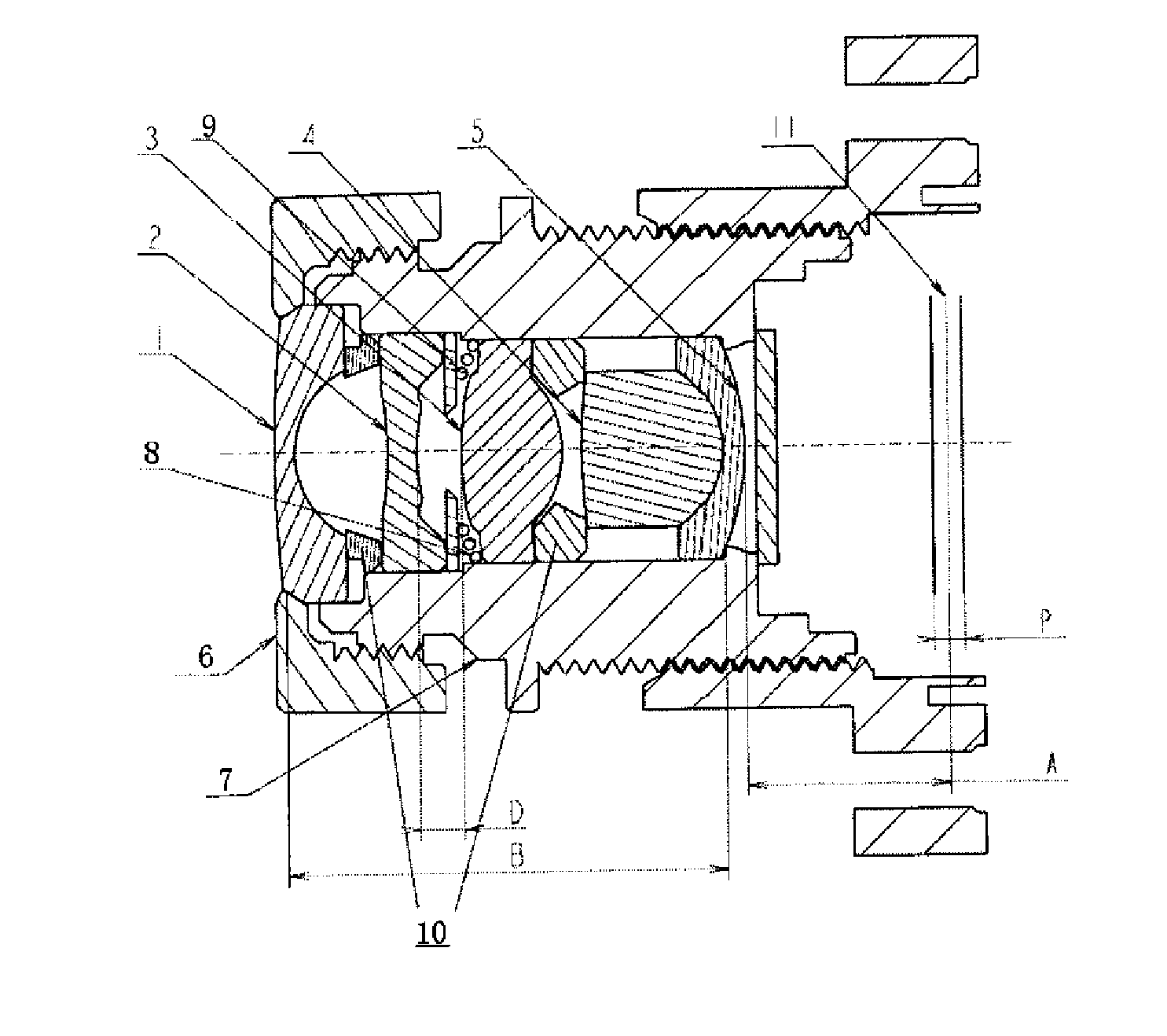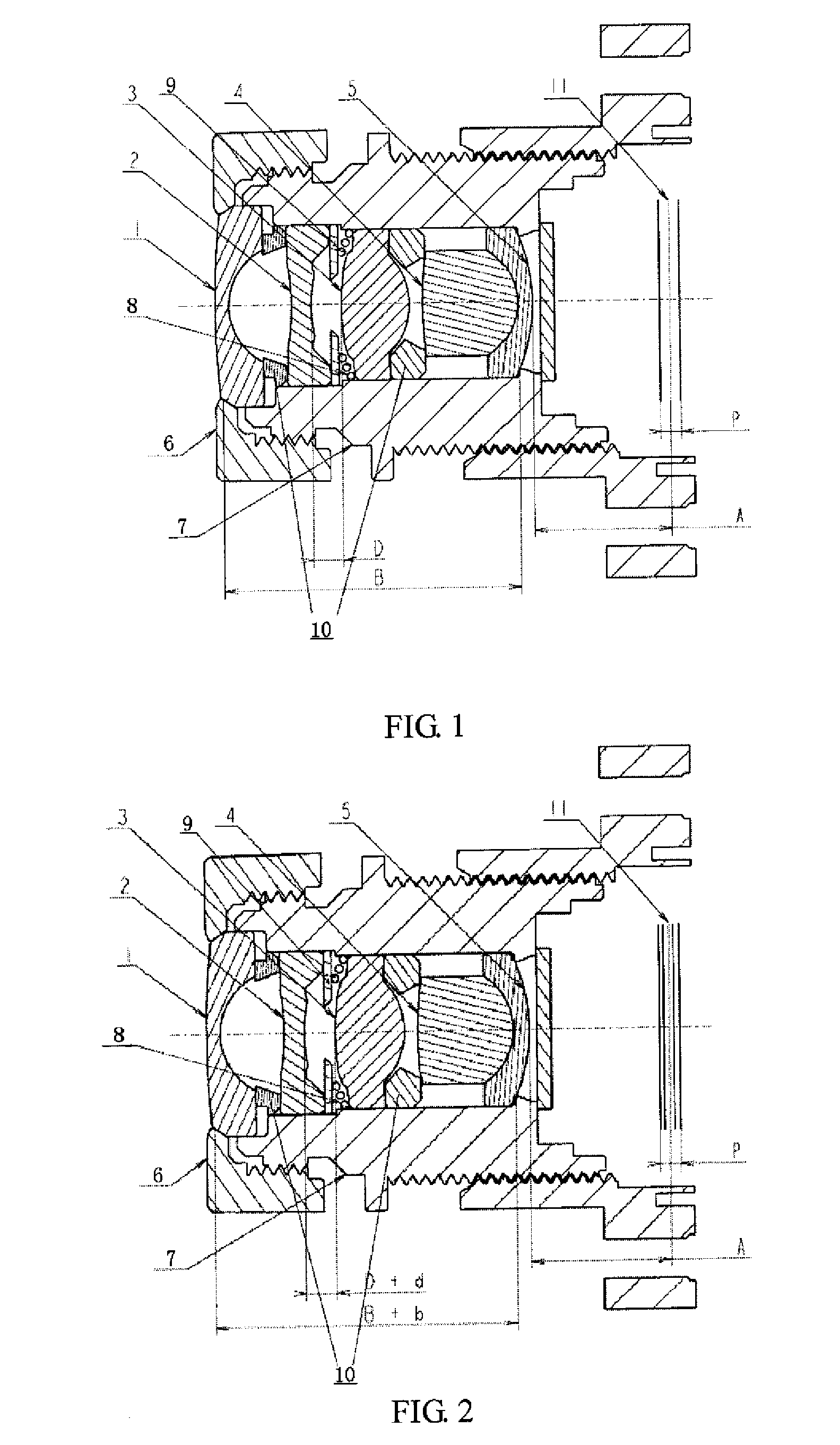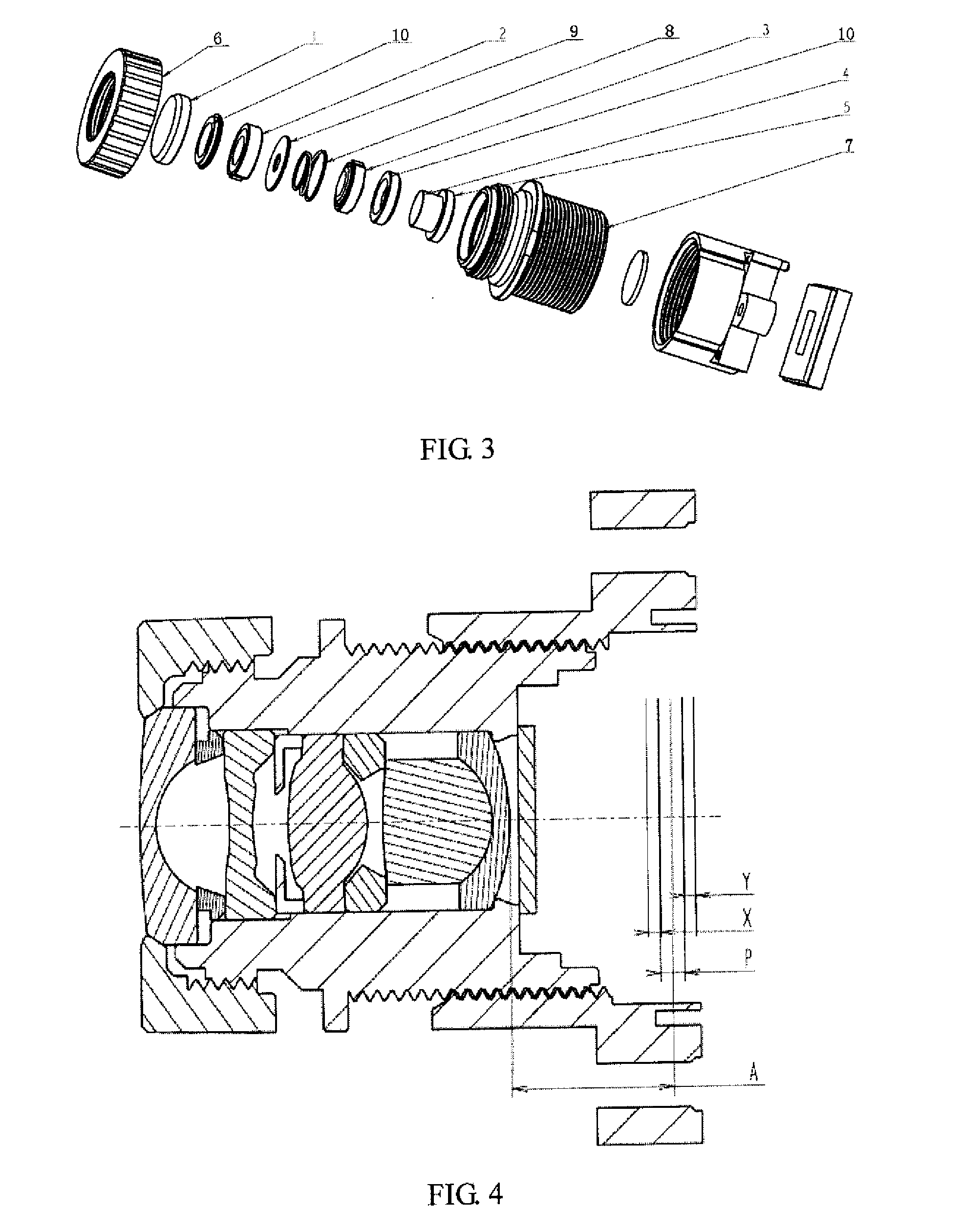Lens Barrel
a barrel and lens technology, applied in the field of optical products, can solve the problems of thermal expansion and refractive index change, and increase in deterioration of optical properties, and achieve the effect of high performan
- Summary
- Abstract
- Description
- Claims
- Application Information
AI Technical Summary
Benefits of technology
Problems solved by technology
Method used
Image
Examples
first embodiment
[0029]the present invention will be described with reference to FIGS. 1 and 2.
[0030]A lens barrel of the present invention comprises: a plastic pressing ring 6, a plastic lens chamber 7, 1st-5th lenses 1-5 held in the plastic lens chamber 7, a compressed spring 8 disposed between the second lens 2 and the third lens 3 for urging in a direction such that the second lens 2 and the third lens 3 are separated from each other in opposite directions, a parallel spacer 9, and spacers 10 for positioning two adjacent sets of lenses in the optical axis direction. The lens groups 1-5 and the spacers 10 are urged by the compressed spring 8 in the optical axis direction so as to receive appropriate load pressures. The plastic lens chamber 7, the plastic pressing ring 6, the lens groups 1-5 and the spacers 10 have different linear expansion coefficients. As the temperature changes, the size of each component changes to accumulate to form a difference value. Under the action of the compressed spri...
PUM
 Login to View More
Login to View More Abstract
Description
Claims
Application Information
 Login to View More
Login to View More - R&D
- Intellectual Property
- Life Sciences
- Materials
- Tech Scout
- Unparalleled Data Quality
- Higher Quality Content
- 60% Fewer Hallucinations
Browse by: Latest US Patents, China's latest patents, Technical Efficacy Thesaurus, Application Domain, Technology Topic, Popular Technical Reports.
© 2025 PatSnap. All rights reserved.Legal|Privacy policy|Modern Slavery Act Transparency Statement|Sitemap|About US| Contact US: help@patsnap.com



